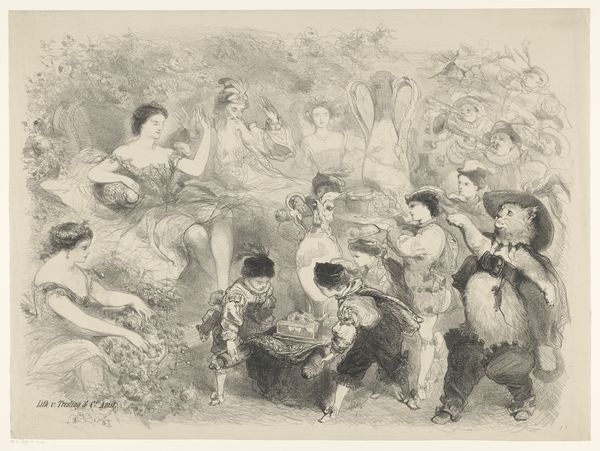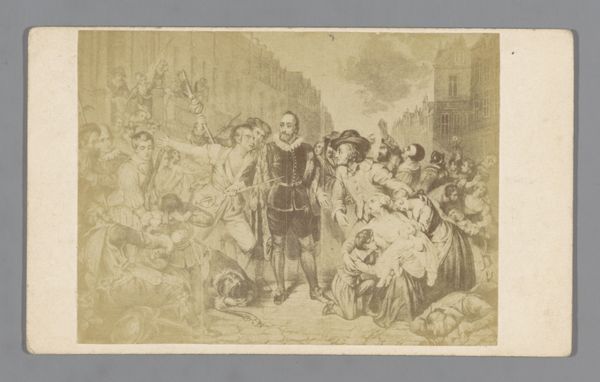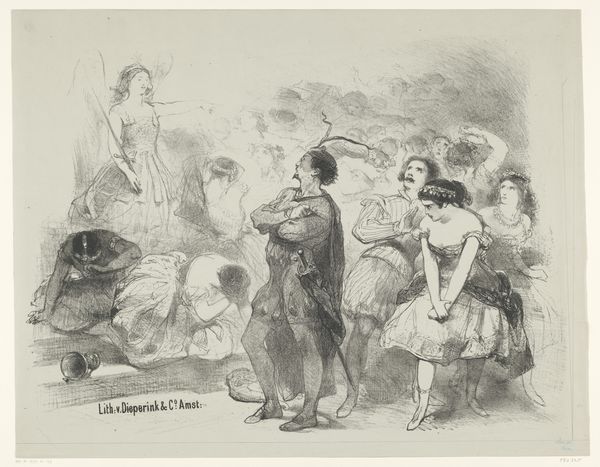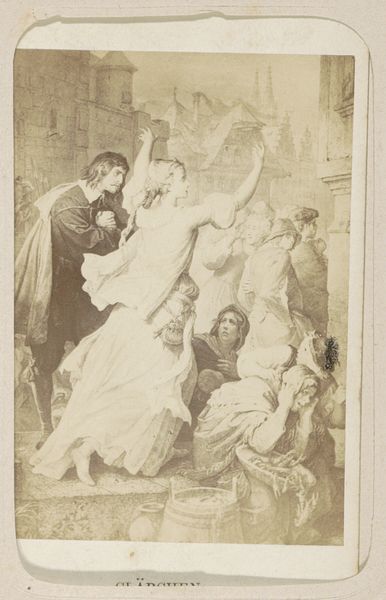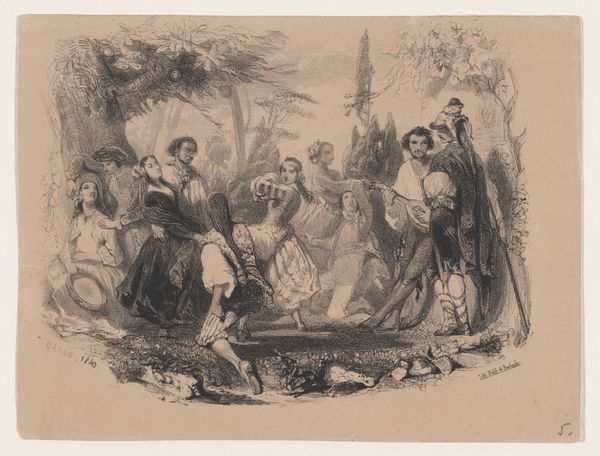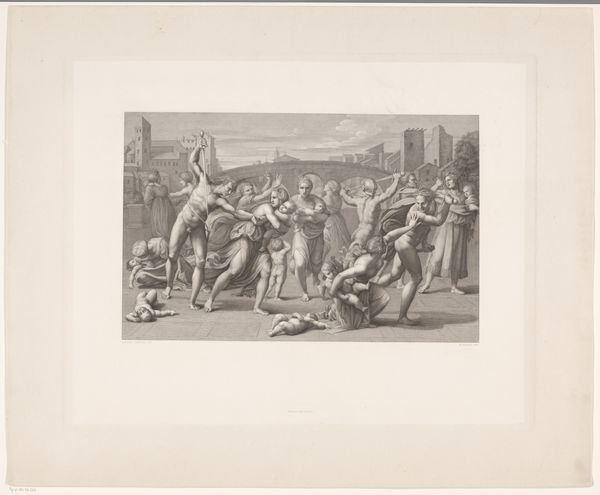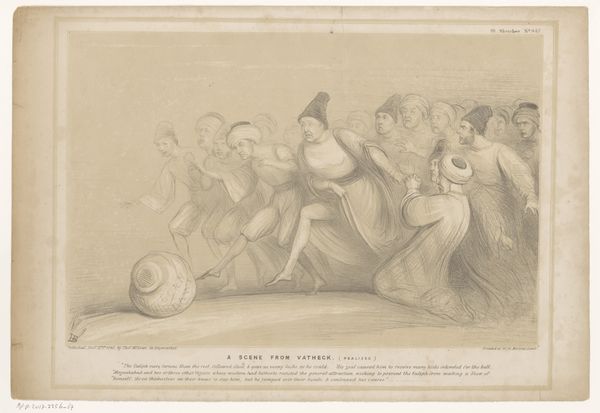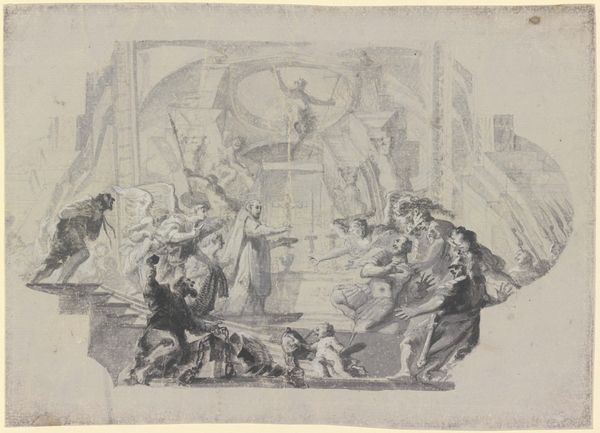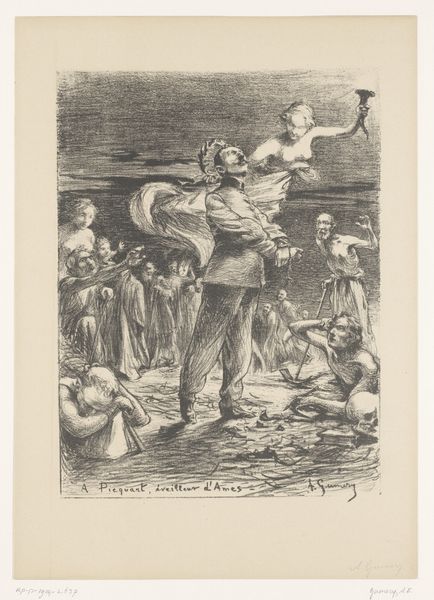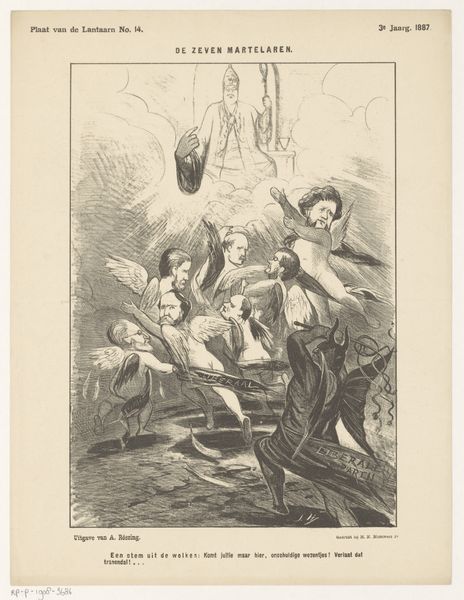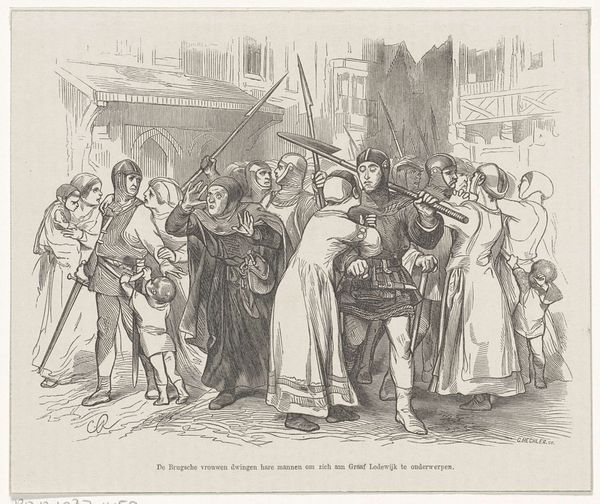
Dimensions: height 528 mm, width 664 mm
Copyright: Rijks Museum: Open Domain
Charles Rochussen created this lithograph, 'Scène uit het toneelstuk Waarheid en Leugen,' using a process that democratized image-making in the 19th century. Lithography depends on the simple principle that oil and water don't mix. The artist draws on a flat slab of limestone with a greasy crayon, then the stone is treated with acid and inked. The ink adheres only to the drawn areas, which are then transferred to paper. Here, this printmaking technique allows Rochussen to render a complex scene with many figures, capturing the drama of a theatrical performance. The very nature of lithography – its capacity for relatively quick and inexpensive reproduction – aligns with the play's themes of truth and deception, performance and reality. This was a technology that helped make art accessible to a wider audience, moving it beyond the elite circles of painting and sculpture. It's a reminder that the materials and methods of art production are never neutral; they always carry social and cultural significance.
Comments
No comments
Be the first to comment and join the conversation on the ultimate creative platform.
